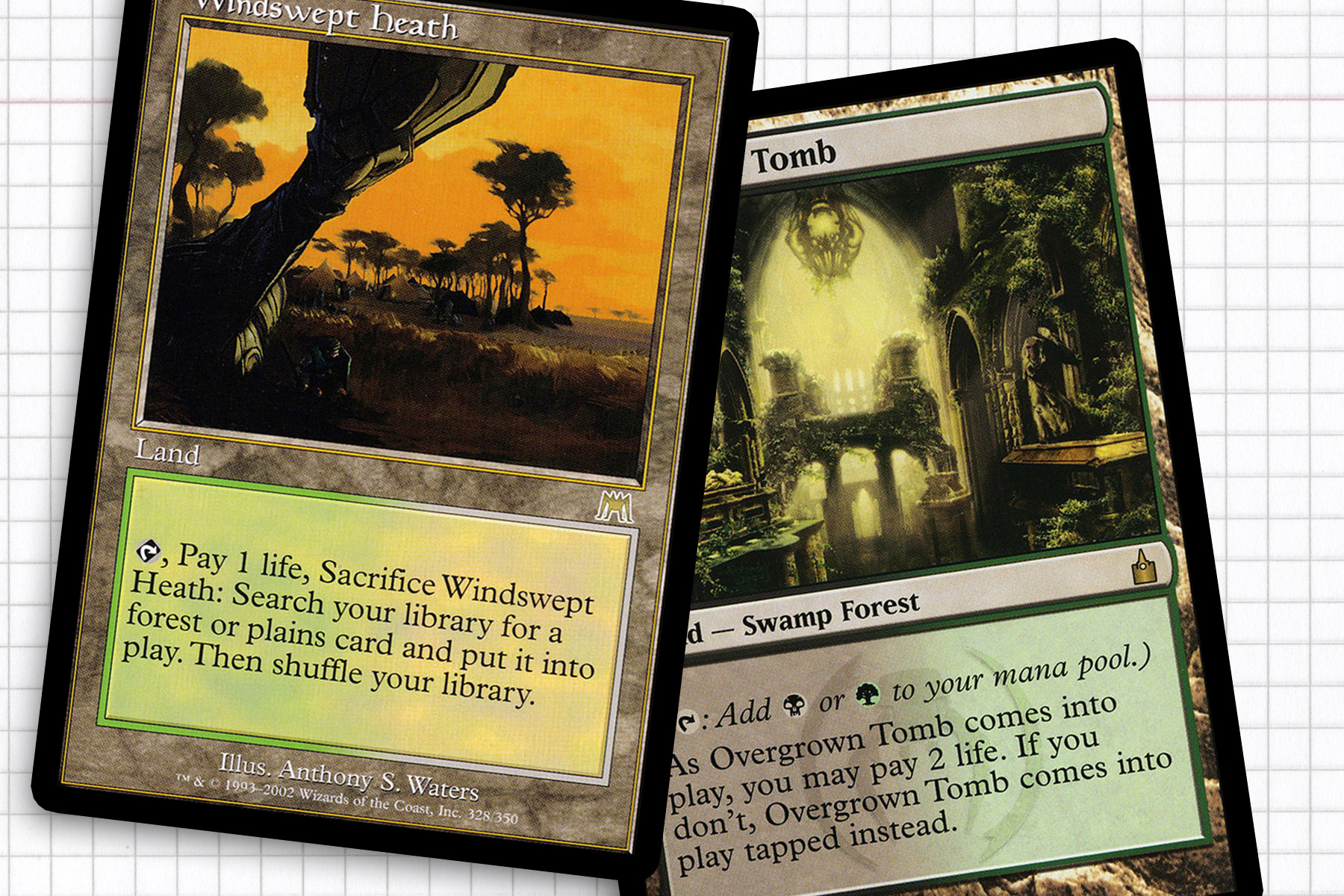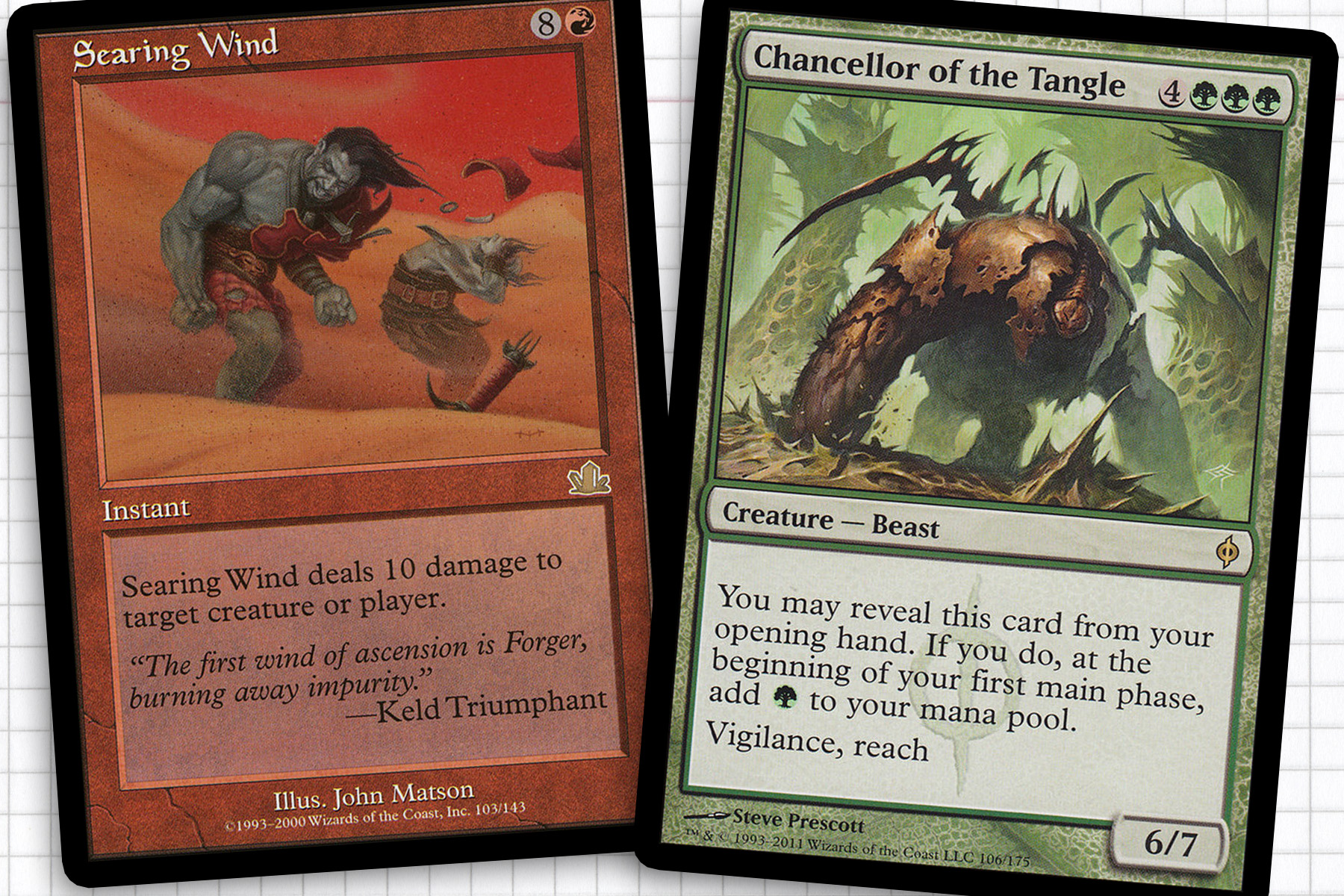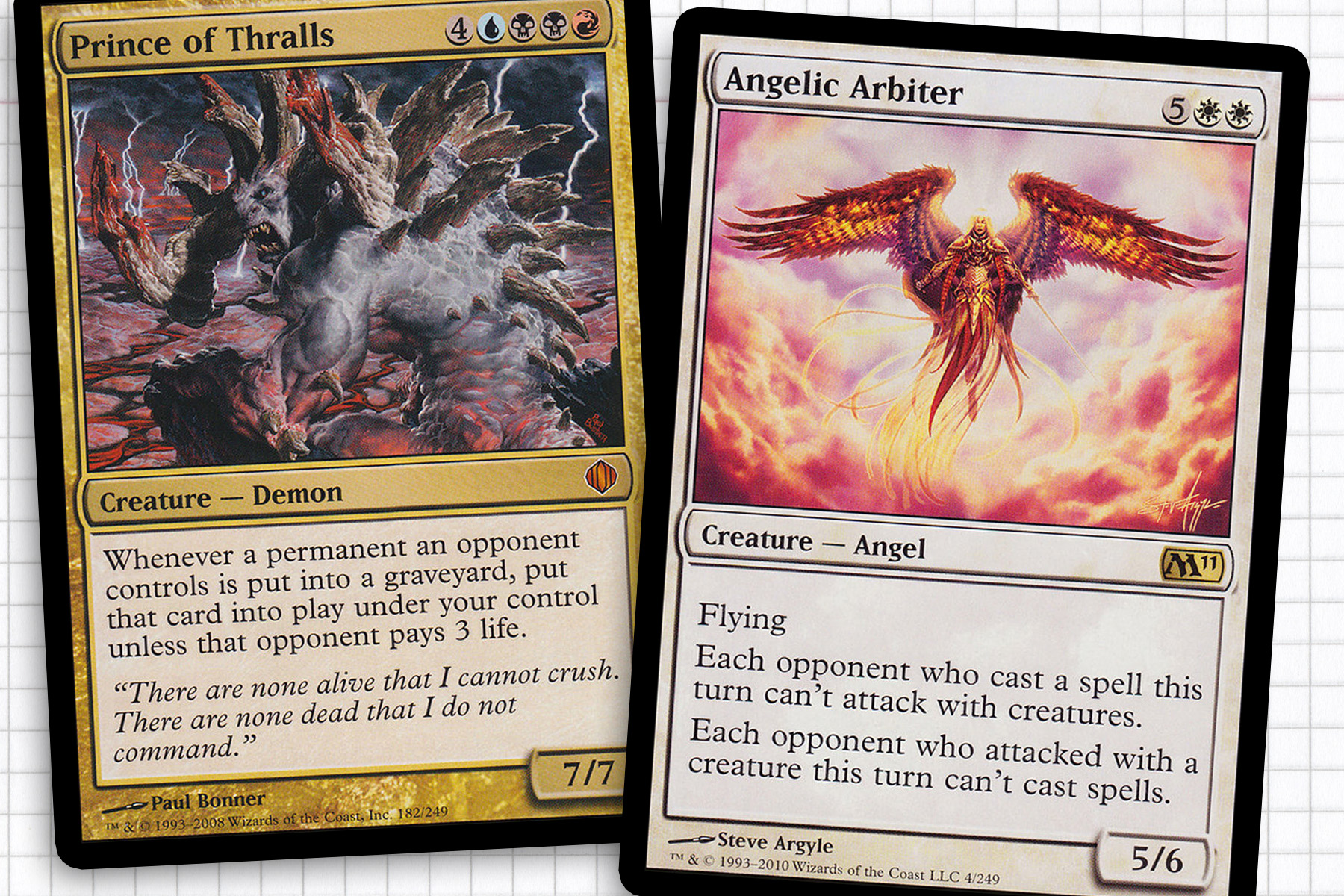Five color generals are a bit of a paradox for me. They can be very fun to build around or at least dedicate passing moments of a weekend to theorycrafting what I might want to do with this or that five color general. But having access to any card in the history of Magic can make for an immensely daunting task when it comes to finding the 99 cards that I want to dedicate myself to. I tried last Fall to make Karona, False God article work, but had to scramble to put something else together in the last day or so before my deadline was up. The takeaway was that without a theme setting everything up—The Ur-Dragon, Child of Alara, or General Tazri—it was hard to know exactly where I wanted to start. I don’t know if this is a problem for anyone besides me, but as I have outlined in the past, building a deck can be very personal experience. Finding a deck’s identity can sometimes require an emotional through-line. Today, I think I have found the starting point for Jodah, Archmage Eternal, but I have a feeling this one might get incredibly casual very quickly.
Jodah, Archmage Eternal
As the Magic Gamepedia summarizes, Jodah was a powerful archmage during Dominaria’s Dark Age and Ice Age, who was present for many of the important historical events of the plane. Jodah was very influential during the Ice Age in developing and researching the aspects of color magic on Dominaria. He was also a major contributor to the returning of the Shard—long story, but basically a dozen or so planes were blocked off from the rest of the multiverse—to their place among the multiverse. There is a lot more to this character who has existed within the lore for over two decades, but I would point you to Vorthos Cast and especially Jay Annelli for the full depth of the character. For someone with a history dating back to Ice Age, its weird how little the character has made an impression on the card game itself. As a card, Jodah fulfills a niche I have loved seeing in legendary creature design over the years, taking a notable card—in this case, Fist of Suns—and functionally make it a general.
Maybe the most frustrating part of building a five color deck has been never being able to get Fist of Suns to really work. My previous venture into five color territory with The Ur-Dragon did include the Fifth Dawn artifact. But from experience, it rarely got cast and often just put more pressure on having all colors of mana instead of making spells easier to cast. The fault, as I see it, is that it’s not a facet of the deck you can rely on. For Fist of Suns to really make a difference in a deck, there needs to be a large amount of spells that vastly improve by having the WUBRG cost be a reduction in price, but the cost is that if you don’t have the cost reducer in play, you’re just left with a lot of expensive spells and no reasonable way to cast them.
A prime candidate for protection like Swiftfoot Boots or Darksteel Plate, Jodah is a central part of the deck as I see it, powerful in that it can be a generic five color general that’s only theme is interacting favorably with the general helming it. In a finalized version, I can imagine this deck would share a lot of cards with last week’s Jhoira of the Ghitu deck, but going much bigger, as he has access to three more colors. In the hunt for a theme, I may have found that the best theme is a balance between “win with big stuff” and evoking a sense of early Magic.

A Brief Detour for Mana
A mana base can get away from you quickly, especially as you move beyond three colors of mana. So it can be hard to pin down the best rule of thumb for a mana base. For a deck such as this, where you need all five colors mana and in almost completely equal amounts all around, I like to employ fetchlands, but not necessarily all ten from the Onslaught and Zendikar sets. Obviously there are people who want their Commander decks to be hyper consistent, but I prefer to use the Onslaught ally fetches paired with the enemy colored shocklands from either Ravnica block. This allows me to have my pick of dual lands with any fetchland I might draw. Wizards has been good to us and supplied us with allied duals in both Battle for Zendikar and Amonkhet, so I have in the past use these to complete my ten dual package, but tempering the power level of my deck.
Outside of lands like Reflecting Pool, City of Brass, or Mana Confluence, we’re also going to want to invest in cards to balance our mana more than possibly any other deck. Role players like Cultivate or Farseek, mana doublers like Mirari’s Wake or Zendikar Resurgent are all going to help us in that respect. But since Jodah might become public enemy number one very quickly, I strongly recommend finding creative ways to sneak spells into play. Beyond using Jhoira of the Ghitu in this deck, I also like ongoing effects in the form of Sunbird’s Invocation, Lurking Predators, and Oracle’s Vault.

High Cost Cycles
The deeper I dove into this article, the more I felt like this deck would evoke feelings of my early Magic career. While Commander is a great casual format, sometimes the “arms race” of a playgroup can make it so the bombastic spells that characterized the early years of the format get brushed aside for lower mana curves and hemogination. But if Jodah can reprice bigger spells from a converted mana cost of seven, eight, or higher with just five colored mana symbols, that levels the playing field and makes room for the more bombastic.
There is no question this deck will employ some awesome fattie creatures, but I would like to dive into a few cycles of more obscure cards to really harness the power of Jodah. Throughout Magic’s history there have been some underplayed or even much maligned cycles of cards, I think of the Wind cycle of Prophecy, which is best known for Plague Wind, but in this deck Searing Wind or Blessed Wind could see their time to shine. Also from Prophecy is the Avatar cycle, with Jodah’s cost reduction, we can easily cast Avatar of Hope or Avatar of Will and get generally good bodies. I look to the Chancellor cycle from New Phyrexia and see overlooked creatures in the Blue, Green and Black pieces of the cycle. Lastly, if there is room to fit any of them in, I am such a fan of the Myojin from Kamigawa that being able to have them while also getting their cast from hand indestructibility is very appealing.

Standing on Their Own
Moving beyond the cycles through Magic history, I want cast a spotlight on individual cards passed over in most decks that can be threats all by themselves. Your experience may vary, but these are the kinds of cards that exemplify the “win through battlecruisers and splashy spells” mentality that got me excited about this build.
Seeing most of its play in Kaalia and Mayael decks, Angelic Arbiter is the kind of card that will bring the rest of the table to our level. By limiting our opponents to have to choose between attacking or casting spells, we can limit hyper-aggressive decks from maintaining a grasp on the game. For the games that are aggressive despite our best efforts, we have Heroes Remembered and Invincible Hymn to keep our life totals full. We can also keep out stuff safe with Privileged Position and hidden gem cousin, Cloud Cover.
But we can’t play control the entire game—you often don’t win that way—so I advise stocking hard-to-answer creatures like Simic Sky Swallower and Kalonian Behemoth, both of which were probably taking up room in a trade binder anyway. I chose to fill out the rest of my battlecruisers with creatures like Prince of Thralls, Godsire, and Sphinx of the Steel Wind, that way the rest of the table will never know quite what to expect next.
While we might be cramming our deck with as many cool effects as we can, it’s always a good idea to be ready to capitalize on the out opponents having desirable things to do as well. Because we have the entire expanse of Magic before us, we can dig into cards I rarely get to sleeve up. Worst Fears is an overcosted card for most decks, but here it can allow us to form a turn’s long alliance with another player, but where we get to make all the decisions. Yavimaya’s Embrace is my second favorite Control Magic effect behind Corrupted Conscience, which makes it a shame that it’s never been functionally reprinted outside of Invasion block’s power level. And then there is Mindleech Mass, another card that does something great, but it suffers from coming out of a time when creatures hadn’t yet taken off in power level.
Other five color generals can get solved quickly—especially since many represent a five-color tribal general—but Jodah, Archmage Eternal is going to be worth time to brew unique decks for any player’s style. This is my kind of open ended deck, more in the vein of Child of Alara where you have some direction and less like Progenitus, a daunting blank slate to fill out as you see fit. While I have given five-color a solid try before, nothing really sparked my imagination like Jodah and I imagine I will be doing a return to this deck once I have carved out it’s true identity. Until next time, I hope you can find the Jodah build for you as well.

